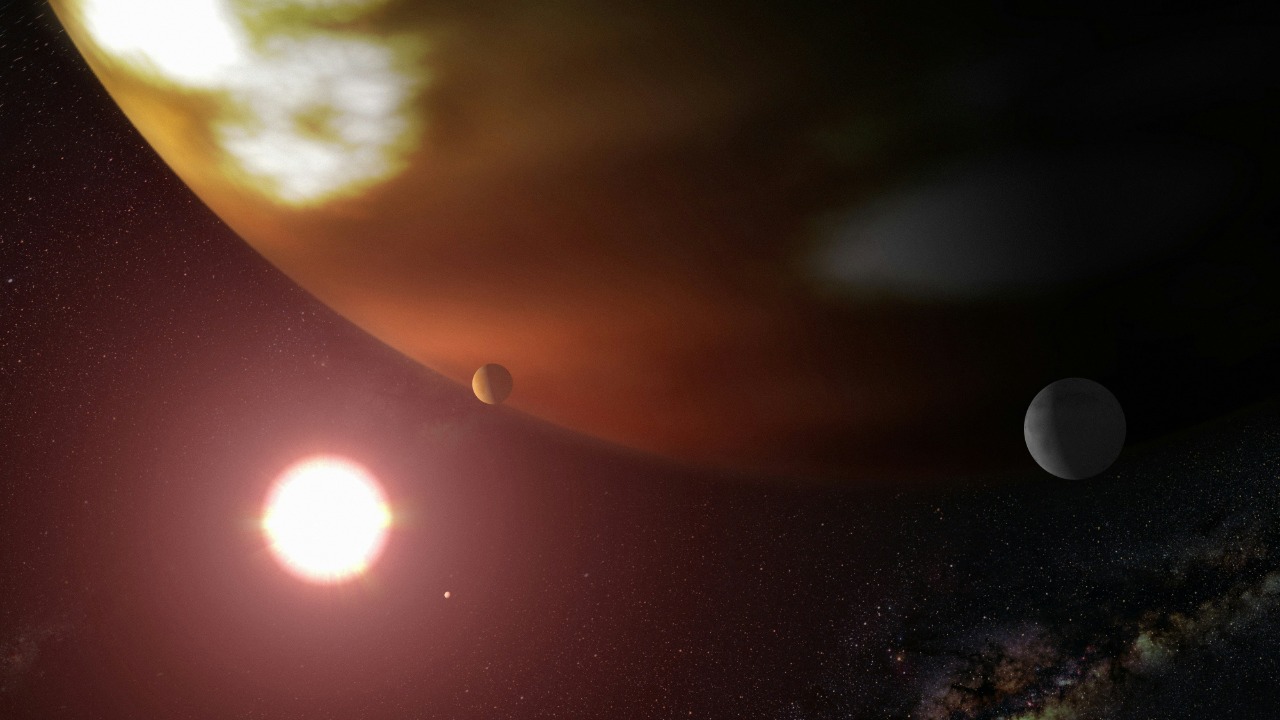
Astronomers have made a groundbreaking discovery of three Earth-sized planets orbiting within a compact binary star system. This rare configuration, where planets circle two stars simultaneously, challenges existing models of planetary formation. Announced on October 24, 2025, this finding emphasizes the system’s proximity and stability, offering fresh insights into habitable zones around binary stars. This discovery not only builds on previous exoplanet hunts but also stands out for its unique dual-star orbit, potentially reshaping our understanding of space dynamics.
Discovery of the Binary System
The initial detection of these three Earth-sized planets was achieved through transit photometry, a method that identifies planets by observing the dimming of a star as a planet passes in front of it. This technique was pivotal in the October 24, 2025 announcement, revealing the planets’ presence in a compact binary system. The binary stars are characterized by their close proximity, allowing the planets to orbit both stars simultaneously, a setup that is both unusual and intriguing. This configuration has been highlighted in recent coverage, underscoring its rarity and the potential for new scientific insights.
Located relatively nearby, this binary system offers a unique opportunity for detailed observation without the need for advanced new telescopes. The compactness of the system means that astronomers can study it in greater detail, providing a clearer picture of how such systems operate. This proximity not only facilitates current observations but also sets the stage for future studies that could further unravel the mysteries of planetary formation in binary systems.
Characteristics of the Planets
The three planets discovered in this binary system are remarkable for their Earth-like dimensions. Each planet matches Earth’s size and orbits within the habitable zone of the binary pair, where conditions might support liquid water. This discovery has sparked excitement among astronomers, who are intrigued by the potential for rocky compositions and atmospheres on these planets. The system’s bizarre stability, as noted in reports from October 25, 2025, adds to the intrigue, suggesting that these planets could maintain stable orbits despite the gravitational complexities of a dual-star system.
The planets‘ orbits are tightly packed, maintaining a compact arrangement around the two stars. This configuration not only challenges existing theories about planetary stability in binary systems but also opens up new avenues for research into how such systems can sustain life-supporting conditions. The compact nature of the orbits ensures that the planets remain in a stable configuration, providing a unique laboratory for studying the dynamics of multi-planet systems in binary star environments.
Implications for Exoplanet Research
This discovery has significant implications for exoplanet research, as it demonstrates the possibility of stable multi-planet orbits in binary systems. This finding, as noted in analyses from October 25, 2025, could rewrite the rules of planetary systems, challenging existing models and prompting a reevaluation of how planets form and evolve in such environments. The discovery is reminiscent of the 2016 finding of three Earth-sized planets orbiting a tiny nearby star, highlighting the evolution of detection techniques over nearly a decade.
In 2017, astronomers discovered seven Earth-sized planets around a nearby star, further contextualizing the scale and frequency of such Earth-like worlds. These discoveries collectively underscore the growing understanding of planetary systems and the increasing sophistication of detection methods. The current finding adds a new dimension to this body of research, emphasizing the potential for diverse planetary systems in the universe.
Future Observations and Challenges
Looking ahead, astronomers plan to conduct spectroscopic studies to assess the atmospheres of the three planets, leveraging the binary system’s accessibility. These studies could provide critical insights into the composition and potential habitability of the planets, further expanding our understanding of planetary systems in binary environments. However, the compact binary setup presents observational challenges, including interference from the dual stars during transits, which could complicate data collection and analysis.
The broader implications of this discovery extend to the search for life in binary systems. The ability of planets to orbit two stars at once, as reported on October 24, 2025, suggests that binary systems could host habitable worlds, expanding the scope of the search for extraterrestrial life. This finding not only challenges existing paradigms but also inspires new lines of inquiry into the potential for life beyond our solar system.
In conclusion, the discovery of three Earth-sized planets in a compact binary system represents a significant milestone in exoplanet research. It challenges existing models, offers new insights into planetary formation, and expands the possibilities for finding habitable worlds in the universe. As astronomers continue to explore this intriguing system, the potential for groundbreaking discoveries remains high, promising to reshape our understanding of the cosmos.
More from MorningOverview